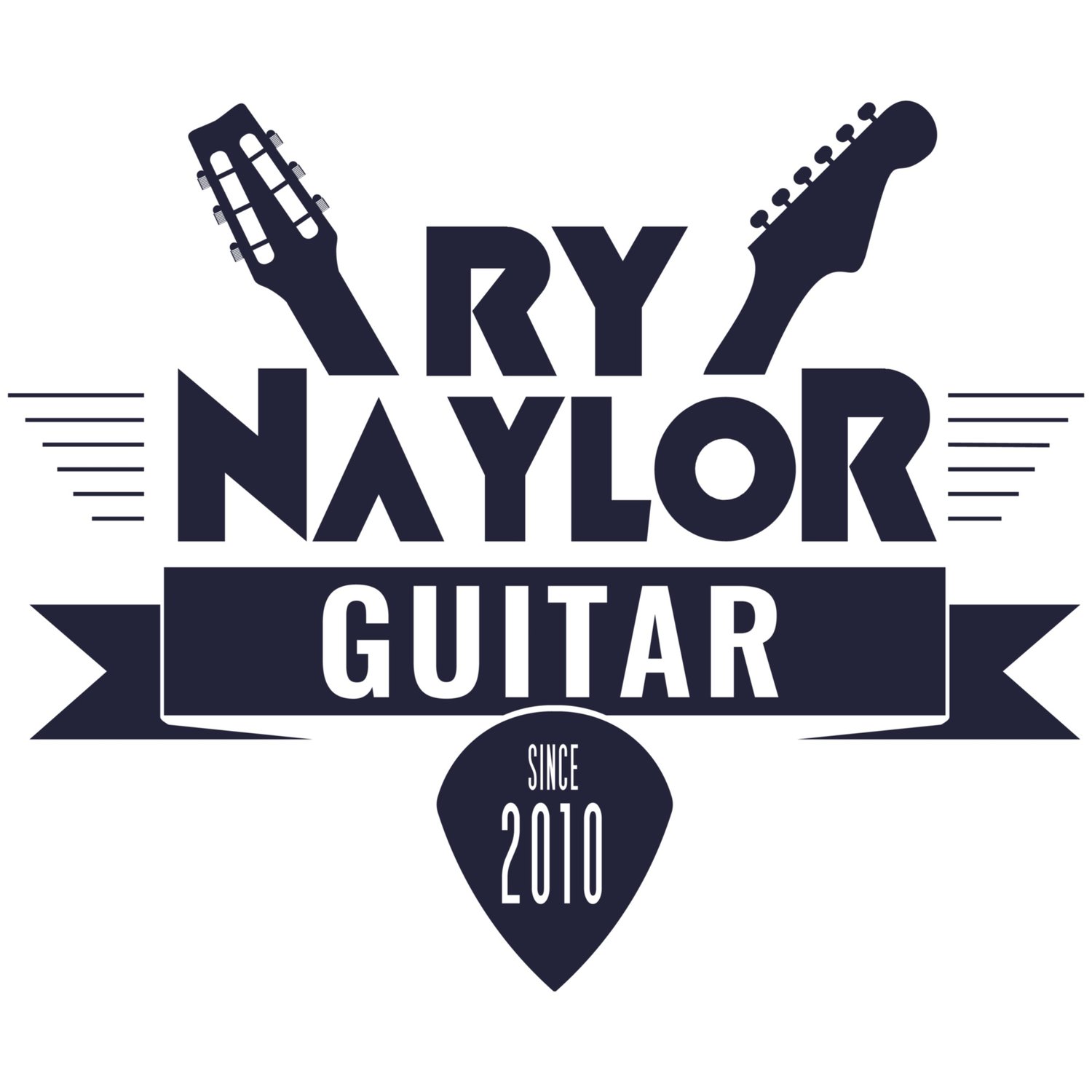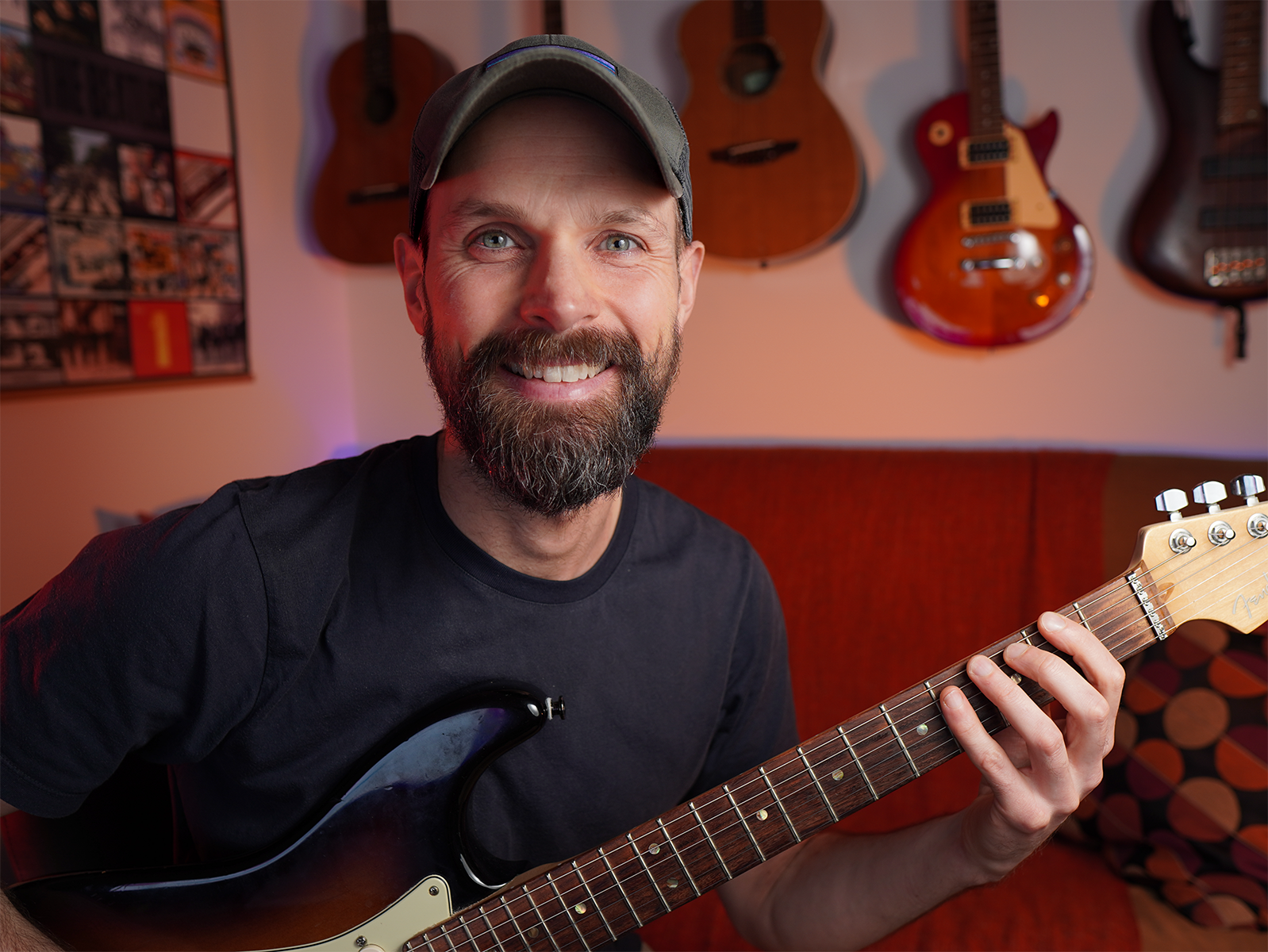Stop Guessing. Start Understanding.
The Visual Learner's Advantage: Finally See How Guitar Theory Maps Onto the Fretboard.
If you're a self-taught guitarist, you know the drill: hours spent piecing together fragmented lessons from YouTube, grabbing tips from Instagram, and trying to connect the dots yourself. You have the passion, but all that piece-meal learning often leaves you with a serious gap: disorganization, confusion, and frustrating plateaus.
I’m Ry, a guitar instructor and content creator who’s been helping guitarists since 2010.
My mission is to help you move past the guesswork and achieve a deeper understanding of the guitar. I’ll give you the missing blueprint to organize everything you’ve learned.
Stop Searching, Start Structuring
I understand the struggle of dry theory books. That's why I call myself the visual learner’s guitar instructor. I combine my love for guitar and design to present complex concepts in concise, intuitive ways using high-quality graphics and animation. You don't just read about theory; you see it clearly laid out across the fretboard.
What is Guitar Theory? The Key to Organization
Guitar theory is the practical application of music's common language - pitch, rhythm, and harmony - applied directly to the guitar.
It helps you understand how and why music works.
It organizes all those random scales, chords, and licks you picked up online into a unified, cohesive system.
Even a little bit of structured theory is the most effective way to break through those common ruts and confidently progress from an intermediate player to a true musician.
Ready to Get Organized?
If you're tired of fragmented learning and ready for a visual, efficient, and crystal-clear system, you have two great options to dive in:
My Online Store: Access my premium video courses and detailed eBooks to structure your knowledge on your own time. This is the perfect solution for self-paced, organized learning - Explore the Courses & eBooks Now
Live 1-on-1 Lessons: For personalized curriculum, direct technique feedback, and the fastest path to your specific goals, check out my live online lessons offered worldwide - Book Your First Lesson
Check out my regular free lessons on Instagram and YouTube to get a taste of my unique teaching style.
Ry’s 6 Pillars of Guitar Theory Mastery
Memorize the guitar fretboard
Master major scale theory
Triads, Triads, Triads!
Internalize Intervals
Get organized with CAGED
Learn by listening
Memorize the guitar fretboard
This is so valuable, yet so often overlooked.
So much of what you learn on guitar relies on some anchoring on the fretboard, a starting point from which everything else branches out. We call this starting note a Root. Literally, it’s like the roots of a tree from which the other guitar theory concepts grow.
But how do you root a chord, arpeggio, or scale shape on the fretboard from, for example, a C note if you don’t know where all the C notes are?
You can muddle your way there or rely on some complex geometry to find what you need, but knowing the notes of the guitar fretboard should be instinctive.
You should know your instrument like any other musician does. Knowing the notes of the fretboard is a skill that every guitarist should have. That’s why ‘Fretboard Mastery’ will always be free to anyone that’s prepared to put in the effort.
If you’d like to study the fretboard with video lessons you can do so in Core Concepts - Fretboard GPS, my latest course teaching you how to effectively memorize all the fretboard notes in just a few weeks of focused practice.
Master Major Scale Theory
The major scale is like the ruler of music. It’s the basis upon which we identify intervals (see below). It’s how we analyze chords and scales, and it is the starting point for a study of harmony and chords that fall within a key.
If you’re just going to dip your feet a little into guitar music theory, this is where you need to study.
Major scale theory and all the other fundamental topics of music theory for guitarists can be studied in my video course Guitar Rut Busters: Essential Theory.
Triads, Triads, Triads
Open chords quickly become a little bland, and barre chord shapes are just too many notes (especially when playing in a band). Triads are where it’s at!
Triads are chords in their ‘purest’ form of three notes (hence tri-). Mastering triad shapes gives you the ability to play your chords anywhere all over the neck (without standing on the bassist’s toes!). Plus they can make pretty standard chord progressions sound truly beautiful.
You’ll also learn that triads can be used as substitutions for more complex chords from the way that chords are built from stacked thirds.
Triad shapes also form a key visualization for the study of arpeggio patterns in your lead playing. For more on that you should check out my Arpeggios: Building Blocks ebook.
I give you the full rundown on triads and their application in TRIAD5: INSID3 OUT.
I have a FREE triads PDF with all the close voicing triads on the guitar fretboard available to download.
Internalize Intervals
The study of intervals, namely the distance between two notes, is such a powerful tool for guitarists. It has huge benefits for lead playing in terms of your arpeggios, scale shapes, and note choice for soloing and improvisation.
It will also deepen your understanding of chords so you can quickly identify the relationship of each note within a chord grip to the chord’s Root.
A little interval recognition goes a long way and I map out everything you need in my Inside Intervals study guide.
Get organized with CAGED
All this guitar theory needs some sort of effective filing system. That’s exactly what a study of the CAGED system for guitar will give you.
Other fretboard visualization methods such as 3 note-per-string are also beneficial (the more, the more, right?) but as a way to combine all elements of rhythm and lead guitar, I don’t think CAGED can be beaten.
You can learn the benefits of the CAGED system with my ebook CAGED Clarity and it forms the basis of my GUITAR BLUEPRINT method.
Learn by Listening
I firmly believe that you should listen to as much music as possible to develop your own musicianship. How can you ever know what kind of guitarist you want to be if you haven’t listened to any?
You’ll hear it said by the guitar greats that back in the day if you wanted to learn anything you had to do it from the records. They didn’t have the benefit of YouTube!
Whilst the internet is a rich resource for guitar lessons, there’s nothing quite like learning from the music that inspires you.
With some ear training, you’ll be able to work out and learn melodies, licks, chord voicings, progressions, even different techniques from your favourite songs. Learning by ear is a real skill that you should develop as soon as possible.
The next stage is to be able to transcribe what you hear into sheet music or tab so you can refer back to it whenever you need it again.
Transcribing has become one of the main sources of my own musical development in recent years and I provide a custom guitar tab service to help you out until you’re able to work stuff out by yourself!


